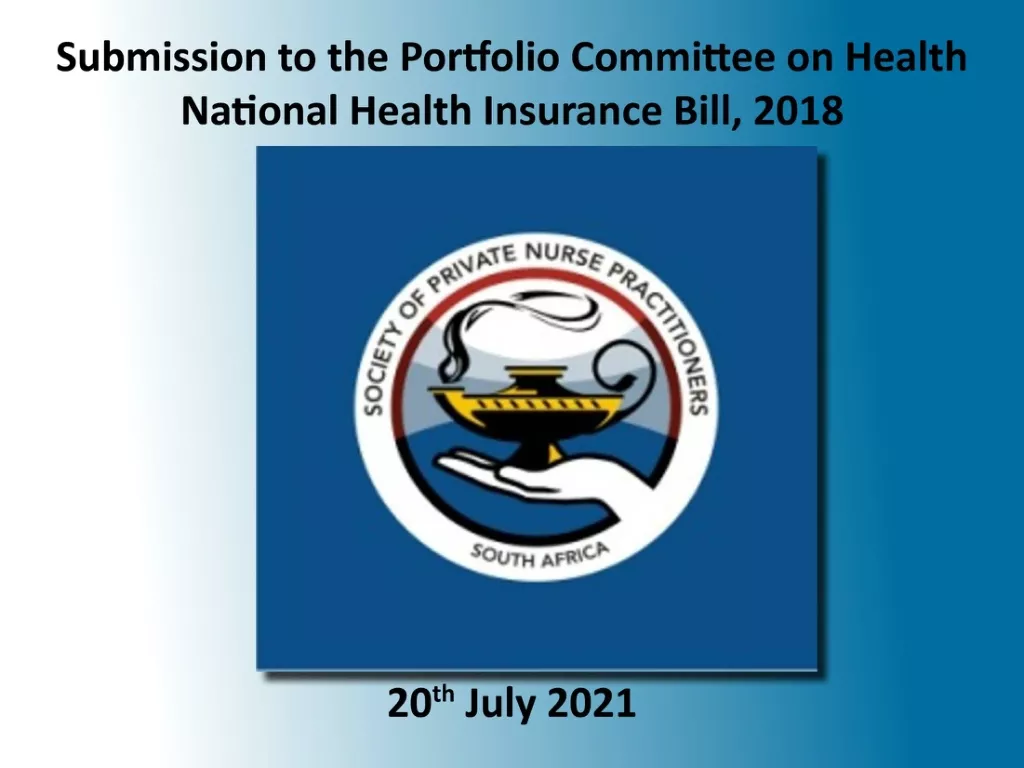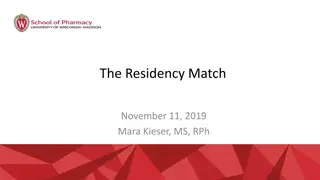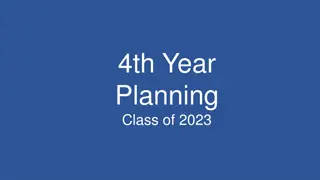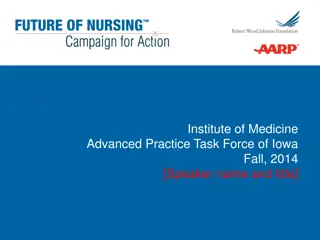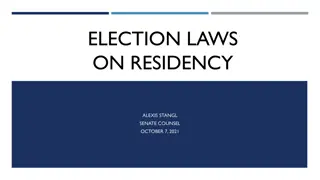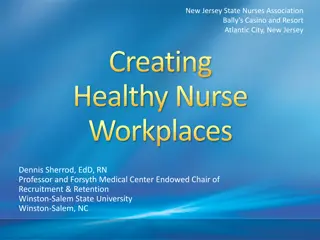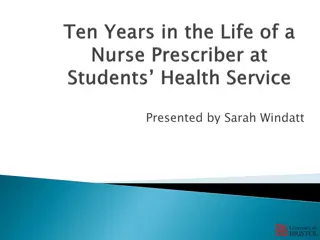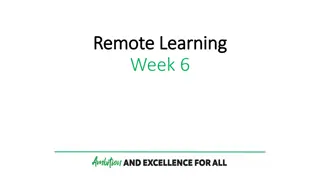Nurse Residency Programs and Academic Credit Opportunities
Nurse Residency Programs (NRPs) play a crucial role in facilitating the transition of newly licensed RNs, enhancing their skills and knowledge, and reducing turnover rates in healthcare settings. This article explores the implementation of academic credit for nurse residency programs, highlighting the positive outcomes, major cost savings, and the goal of expanding nursing education capacity in Maryland through the Nurse Support Program (NSP). With a focus on developing a skilled and resilient nursing workforce, NRPs offer structured experiences to improve patient care, teamwork, and evidence-based practice.
Download Presentation

Please find below an Image/Link to download the presentation.
The content on the website is provided AS IS for your information and personal use only. It may not be sold, licensed, or shared on other websites without obtaining consent from the author.If you encounter any issues during the download, it is possible that the publisher has removed the file from their server.
You are allowed to download the files provided on this website for personal or commercial use, subject to the condition that they are used lawfully. All files are the property of their respective owners.
The content on the website is provided AS IS for your information and personal use only. It may not be sold, licensed, or shared on other websites without obtaining consent from the author.
E N D
Presentation Transcript
Academic Credit for Nurse Residency Programs* *NSPII #16-122
Project Team Louise S. Jenkins, PhD, RN, FAHA, ANEF Director, Institute for Educators and Professor Joan I. Warren, PhD, RN-BC, NEA-BC, FAAN Associate Professor Kathleen M. Martin, DNP, RN, CNE Assistant Professor
Nurse Residency Programs (NRP) Institute of Medicine (IOM) Future of Nursing Report (2011); reaffirmed 2015 Recommendation 3: Implement Nurse Residency Programs
NRP Definition - a formalized, integrated program structured experiences (6 months to 1 year) facilitate clinical, professional skills, knowledge examples of content areas include: patient safety, communication, teamwork patient-centered care, evidence based practice quality improvement IOM. (2015) Assessing progress on the IOM report The Future of Nursing. The National Academies Press: Washington, DC. Lin, P. et al. (2014) Factors influencing job satisfaction of new graduate nurses participating in NRP: A Systematic Review. Journal of Continuing Education in Nursing. 4
NRPs in Maryland Exponential growth in hospital-based NRPs from to 2 in 2012 to 32 in 2016 Annually, more than 1600 newly licensed RNs participate in hospital-based NRPs One-year retention rate of newly licensed RNs participating in NRPs > 90%
Major Cost Savings $$$$$
Why Explore Offering of Academic Credit? Nurse Support Program II
NRP Outcomes Positive impacts of NRP Eases transition Increases confidence levels Enhances critical thinking and clinical decision making skills Reduces turnover rates Major cost savings!!
Nurse Support Program (NSP) Goal NSP: number of RNs in MD NSP I: focus short and long-term issues recruiting & retaining nurses in MD hospitals NSP II: focus expanding capacity to educate nurses through nursing education programs at MD institutions Health Services Cost Review Commission (HSCRC), Nurse Support Program, www.hscrc.gov
Nursing Shortage Maryland Department of Labor, Licensing & Regulation forecasted 22.3% more RNs needed US Bureau of Labor Statistics predicts 26% more RNs needed
Nursing Shortage NSP I and NSP II aligned with national goals using the IOM report, The Future of Nursing Goals include: - increasing the percentage of BSN s - doubling the number of doctorally prepared nurses - nurse residency programs - lifelong learning options
NSP II New Initiative: Innovative Education Systems Call for new approaches and educational models Ex: collaborative educational partnerships for seamless transitions from an ADN to a BSN; and academic-service partnerships MD IOM Committee #4 recommends competency based models for seamless transition NSP II Competitive Grant FY 015 http://www.mhec.state.md.us/Grants/NSPII/NSPII.asp
NSP II: Academic Credit for NRP Specific Aim Explore the feasibility of academic practice partnerships offering academic course credits toward educational advancement to newly licensed registered nurses (NLRN) participating in a hospital-based nurse residency program (NRP)
Models Extensive literature review conducted Yield One publication Cadmus et al. (2014) Nursing Management Post baccalaureate nurse residency program in leadership Robert Wood Johnson University Hospital & Rutgers University
Models University of New Mexico (UNM) & UNM Hospital Curriculum of UNM Hospital accredited nurse residency program approved for 3 elective academic credits in BSN program 2016 pilot 3 residents currently enrolled Penn State University and Penn State Medical Center- Hershey Medical Center AD/Diploma nurse residency program Residents completed additional assignments Discontinued
Information Exchange Purpose gain an understanding of stakeholder perspectives and willingness to support the offering of academic credits for NRPs Attendees Nursing faculty Hospital nursing leaders Nurse Residency Coordinators
Major Finding Did not advocate for nursing programs to develop courses Stakeholders preferred academic credit awarded to nurse residents for their participation/completion in the NRP
Current Research Study Purpose: explore curricular requirements for nurse residency programs seeking academic credits examine the extent of variability in the content and delivery of nurse residency programs in Maryland hospitals identify possible strategies for successful formation of academic and hospital partnerships identify interest of academic nursing programs and hospitals in pursuing partnerships.
Methods Sample Nursing leaders in Maryland hospitals (N=50) Faculty leaders at eligible academic nursing programs (N=15) Procedure Web-based (IRB exempt) survey administered Spring, 2017
Response Rate 28 of the 48 hospitals in Maryland (58%) 3 of the 15 eligible nursing programs (20%)
Next Steps NSPII Proposal Pending - complete analysis and summarize data - identify potential stakeholders - facilitate formation of academic-service partnerships - facilitate academic credit for completion of Nurse Residency Program


